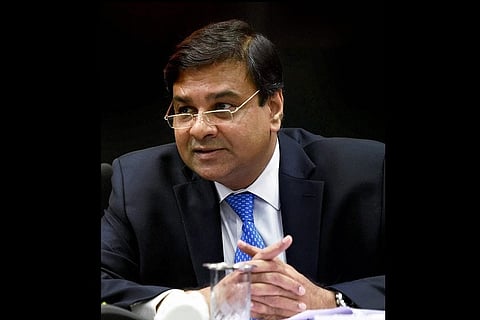

RBI Governor Urjit Patel should resign owing moral responsibility for not properly planning the logistics and other aspects of demonetising 500 and 1,000 rupee notes, a top union leader said.
"Either Prime Minister Narendra Modi or Finance Minister Arun Jaitley would be knowing the minute aspects of demonetisation. The RBI Governor should have advised the government properly as to issues involved and the time needed for the banking sector to be ready for the same," D. Thomas Franco, Senior Vice President of the All India Bank Officers Confederation (AIBOC), told IANS.
The AIBOC has around 2.5 lakh members.
Franco said the RBI Governor should also take moral responsibility for the deaths of 11 bank officials and other people in the last 12 days, according to a report by Arun Janardhanan in the Indian Express.
Soon after the demonetisation of high value notes was taken, C.H. Venkatachalam, General Secretary, All India Bank Employees Association (AIBEA), told IANS that RBI had messed up the lives of people by its improper planning.
"The RBI should take responsibility and explain the actual situation as well as the issues that were taken into account when the legal tender status of 500 and 1,000 rupee notes was withdrawn," Franco added.
He said it was the RBI that prints the currency notes and it should have taken into account the size of notes that could be vended by the ATMs (automatic teller machines).
"The RBI changed the size of 2,000 rupee notes and hence the ATMs had to be recalibrated," Franco said.
According to him, the RBI should also have printed 100 rupee notes in sufficient numbers instead of churning out only the 2,000 rupee notes before taking the demonetisation decision.
“What we are getting is mostly soiled notes, reintroduced by RBI because of this crisis. As detection machines reject most of the soiled notes, it is another herculean task for bank officers to sort these out manually. Had there been a little planning, they could have printed Rs 500 and Rs 100 notes instead of printing Rs 2,000 notes. Does it mean these economists have no clue about how transactions work and currency travels in a country like India?… All the soiled notes have to come back again as they are meant to be disposed,” Franco said as per the IE report.
He added that the central bank's decision of applying indelible ink also added to the confusion with supplies of ink bottles not reaching the bank branches.
"There were complaints of possible skin problems if other inks are used and hence that plan was also shelved," Franco said.
He said the banks could have utilised its customer service centres (around 2.5 lakh centres) and the cooperative banks to dispense the notes instead of restricting to bank branches alone.
(With IANS inputs)